Agatha Christie is highly regarded and remembered more than her individual characters because of the fact that her mysteries were not limited to a single famous detective unlike Sir. Arthur Conan Doyle. She had not only Hercule Poirot, but Miss Marple is almost equally beloved. In addition, other characters such as Parker Pyne and Tommy and Tuppence are well-regarded by mystery fans.
Beyond Agatha Christie, many other mystery writers understood the importance of having more than one detective series going. The point was not lost on Rex Stout. With several Nero Wolfe novels under his belt, Stout tried to branch out with limited success. He wrote one novel featuring lady private eye Dol Bonner and another featuring lawyer Alphabet Hicks. And there were a couple others without a lead detective. None were particularly well-regarded.
One detective did get more than one book-Tecumseh Fox who appeared in three books published between 1939-41. In Tecumseh Fox, Stout had a lot of potential to write a series that departed from Wolfe but still was high quality. In the first book, Double for Death, we’re introduced to Fox. He’s part Native American, he’s resourceful, intelligent, and unlike Wolfe or Bonner, he doesn’t loath the opposite sex. He lives in Westchester County in a country place where he plays host to a variety of eccentrics. He’s not alone in his detective work with an organization behind him including officers in his organization such as a vice-president.
The series had potential to provide another Stoutian detective, with his own unique characterization and background. The setting of his country home seemed to offer rich opportunities to flesh out interesting characters. Sadly, it was not to be.
In Double for Death, like in Dol Bonner’s sole novel, the novel started strong but the life was sucked out of the story by interminable pages of bland questioning of suspects by the official police at a setting that was completely boring. When finally, the murderer was revealed, there was more relief that the affair was over than impression with the intelligence of the solution.
In the next two novels, Stout would ditch most of the distinctive characteristics as Fox would work in New York City away from home and away from any compatriots or Lieutenants. This basically made him just another private detective. But that’s not to say the novels didn’t have features of interest.
Bad for Business may have been the best of the lot as Fox tries to discover who poisoned some candy and killed the owner of the candy company. Indeed, Stout would recycle much of the plot for the Nero Wolfe novella “Bitter End.” The story like the one to follow it The Broken Vase was enjoyable but at the same point, maddening. Both books were good and could have been great if only…
The closest to greatness was when Bad for Business featured Fox trying to solve a case involving one of Dol Bonner’s operatives. Fox and Bonner clashed twice and the story had a feeling of electricity in those moments, but Bonner disappears from the book and the opportunity for greatness passes. Yes, the series had potential but Stout couldn’t bring it to fruition.
The series also exposed and emphasized Stout’s weaknesses as an author. The Wolfe stories all were written from a first person perspective in the memorable voice of Archie Goodwin. It seems as if Stout tried to avoid the first person to prevent the book’s narrator from sounding like Archie. What was used throughout the series was Omniscient narration at its worst: unfocused and uninteresting.
In addition to this, it becomes painfully clear from all of these non-Wolfe novels that Stout was incapable of writing about the romantic relationships in any way that’s not farcical. His romantic angles are strained and his characters’ love affairs are unrealistic and not in a way that appeals to readers.
In the Nero Wolfe book, Stout’s genius is how he negates these deficiencies. Archie Goodwin adds not only flavor to the narrative but focus as well. In the two main protagonists, you have a womanhater and a man whose flirty and flip demeanor towards the opposite sex balances against Stout’s weakness for romance. None of this helped out in the Fox books.
The last Tecumseh Fox book was published in 1941 and then came the War and Stout’s war work limited his output to a precious few Nero Wolfe novellas. The war made people re-calibrate and consider what really mattered, and perhaps War did that for Stout as well. He’d missed writing Nero Wolfe during the war years and when he could, he got right back at it and continued to write Nero Wolfe stories and only Nero Wolfe stories for fiction for the next thirty years. His days of literary flirtation were over.
And readers can be thankful for it. The more time Stout wasted on failed mystery experiments, the less time he had to craft masterful stories like The Silent Speaker, The Golden Spiders, The Next Witness, and The Final Deduction.
If you enjoyed this post, you can have new posts about Detective stories and the golden age of radio and television delivered automatically to your Kindle.
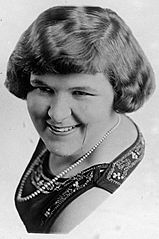 Kate Smith was one of radio’s most enduring personalities. Her first radio program Kate Smith Sings begain airing in 1931. Her last program left the air in August 1958. During her time on the radio, she hosted variety programs, singing programs, and a daily talk show. Her show would provide launching pads for such great stars as the Aldrich Family, Abbott and Costello, and Jackie Gleason. Smith’s signature song was her rendention of God Bless America which she first introduced in 1938. Her beautiful voice and a genial manner makes her one of radio’s must listen to stars.
Kate Smith was one of radio’s most enduring personalities. Her first radio program Kate Smith Sings begain airing in 1931. Her last program left the air in August 1958. During her time on the radio, she hosted variety programs, singing programs, and a daily talk show. Her show would provide launching pads for such great stars as the Aldrich Family, Abbott and Costello, and Jackie Gleason. Smith’s signature song was her rendention of God Bless America which she first introduced in 1938. Her beautiful voice and a genial manner makes her one of radio’s must listen to stars.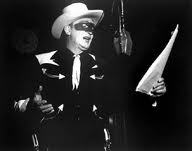 There are few programs that are more associated with the Golden Age of Radio than that of the Lone Ranger. While officially produced as a children’s show, it had and still has many adult fans and Beemer was the best known voice of the Lone Ranger. Before he became the voice of the Lone Ranger, he handled the Ranger’s personal appearances because the then-star Earle Graser didn’t seem to look the part, and he also apparently did some fill-in parts. However, when Graser died, Beemer became radio’s full time Lone Ranger for thirteen years and the vast majority of surving recordings feature Beamer. He was forbidden from taking other acting roles while playing the Lone Ranger.
There are few programs that are more associated with the Golden Age of Radio than that of the Lone Ranger. While officially produced as a children’s show, it had and still has many adult fans and Beemer was the best known voice of the Lone Ranger. Before he became the voice of the Lone Ranger, he handled the Ranger’s personal appearances because the then-star Earle Graser didn’t seem to look the part, and he also apparently did some fill-in parts. However, when Graser died, Beemer became radio’s full time Lone Ranger for thirteen years and the vast majority of surving recordings feature Beamer. He was forbidden from taking other acting roles while playing the Lone Ranger.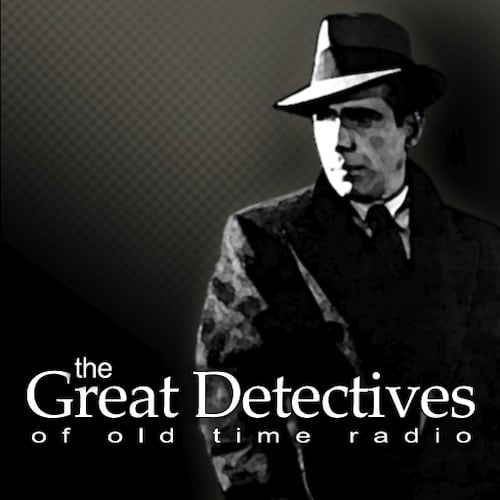
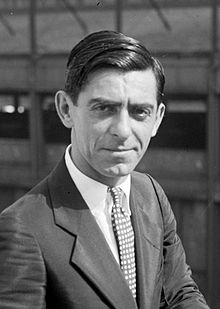 Eddie Cantor was a mainstay over radio for two decades, although favorable reviews of his radio appearance go back to 1922. He hosted many radio programs for a variety of sponsors including Chase and Sanborn, Camel Cigarettes, and Texaco among others. Cantor was one of the premiere comics and singers of the age. His style of entertainment had a decided vaudevillian edge to it, and Cantor’s boisterous showman personality made him a top draw on his program and many others throughout the golden age of radio as he came known as the Apostle Pep and Banjo Eyes. Cantor was remembered for his great characterization of a New York Taxi driver called Maxie the Taxi. He also helped to bring, “Santa Claus is Coming to Town” into the cultural mainstream when he chose to sing the song on his radio program. On a more serious note, Cantor was one of Hollywood’s earliest and most outspoken opponents of Adolf Hitler’s regime in Germany. Once the war started, he was tireless in entertaining allied troops and boosting the war effort.
Eddie Cantor was a mainstay over radio for two decades, although favorable reviews of his radio appearance go back to 1922. He hosted many radio programs for a variety of sponsors including Chase and Sanborn, Camel Cigarettes, and Texaco among others. Cantor was one of the premiere comics and singers of the age. His style of entertainment had a decided vaudevillian edge to it, and Cantor’s boisterous showman personality made him a top draw on his program and many others throughout the golden age of radio as he came known as the Apostle Pep and Banjo Eyes. Cantor was remembered for his great characterization of a New York Taxi driver called Maxie the Taxi. He also helped to bring, “Santa Claus is Coming to Town” into the cultural mainstream when he chose to sing the song on his radio program. On a more serious note, Cantor was one of Hollywood’s earliest and most outspoken opponents of Adolf Hitler’s regime in Germany. Once the war started, he was tireless in entertaining allied troops and boosting the war effort.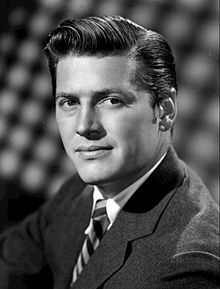 28 Gordon MacRae
28 Gordon MacRae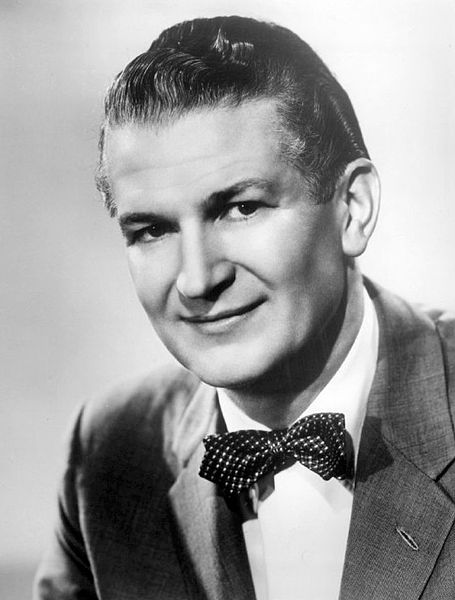 Bud Collyer has more than 20,000 radio credits. Most of these were as announcers or as a game show host. He announced on such a variety of programs as Jungle Jim, Cavalcade of America, the Road of Life, and The Guiding Light. He also spent eleven years as host of TV’s Beat the Clock.
Bud Collyer has more than 20,000 radio credits. Most of these were as announcers or as a game show host. He announced on such a variety of programs as Jungle Jim, Cavalcade of America, the Road of Life, and The Guiding Light. He also spent eleven years as host of TV’s Beat the Clock. 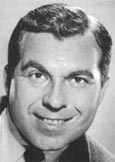 Frees was a master voice actor and radio was his greatest showcase. His pure talent as a voice actor made him much sought after. He appeared on nearly every major radio drama imaginable. Let George Do It, Columbia Workshop, Suspense, Family Theater, Box 13, The Edgar Bergen Show. The full range of his flexibility was shown in two programs, The Player and Studio X where he played all of the characters. Of course, many of his radio characterizations carried over to cartoons where he would provide the voice of Boris Badenov. In addition to all of his character work, Frees was given several programs of his own including Crime Correspondent, The Green Lama, and The Croupier.
Frees was a master voice actor and radio was his greatest showcase. His pure talent as a voice actor made him much sought after. He appeared on nearly every major radio drama imaginable. Let George Do It, Columbia Workshop, Suspense, Family Theater, Box 13, The Edgar Bergen Show. The full range of his flexibility was shown in two programs, The Player and Studio X where he played all of the characters. Of course, many of his radio characterizations carried over to cartoons where he would provide the voice of Boris Badenov. In addition to all of his character work, Frees was given several programs of his own including Crime Correspondent, The Green Lama, and The Croupier.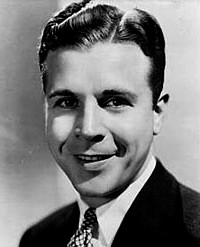 Dick Powell’s career had two phases. He was a song and dance man before taking on a series fo tough dramatic parts beginning with Murder My Sweet and continuing through gritty films such as Johnny O’Clock and Pitfall .Radio captured both of these stages due not only to Powell’s many performances on the Lux Radio Theater but through the radio programs he appeared in. Dick Powell through the 1930s and 40s sang on programs such as Hollywood Hotel.
Dick Powell’s career had two phases. He was a song and dance man before taking on a series fo tough dramatic parts beginning with Murder My Sweet and continuing through gritty films such as Johnny O’Clock and Pitfall .Radio captured both of these stages due not only to Powell’s many performances on the Lux Radio Theater but through the radio programs he appeared in. Dick Powell through the 1930s and 40s sang on programs such as Hollywood Hotel.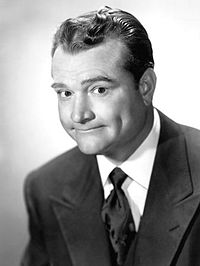 The comedian best known for creating characters such as The Mean Widdle Kid and Clem Kadiddlehopper began first on radio before he hit television. He was discovered by Rudy Valee and his first major starring role in radio came on Avalon Time in 1939, and then in 1941 he landed his own titular program which he would maintain until 1953 (with the exception of service in World War II before leaving radio for good for the new frontier of television. Skelton’s comedy affected the wider culture as character catch phrases like, “We dood it” entered the popular lexicon. Skelton at times was a challenger to Bob Hope in the ratings numbers, as he remained popular at radio’s zenith. In addition to his legendary style of comedy, Skelton’s program served as a launching pad for the career of two promising younger named Ozzie and Harriet.
The comedian best known for creating characters such as The Mean Widdle Kid and Clem Kadiddlehopper began first on radio before he hit television. He was discovered by Rudy Valee and his first major starring role in radio came on Avalon Time in 1939, and then in 1941 he landed his own titular program which he would maintain until 1953 (with the exception of service in World War II before leaving radio for good for the new frontier of television. Skelton’s comedy affected the wider culture as character catch phrases like, “We dood it” entered the popular lexicon. Skelton at times was a challenger to Bob Hope in the ratings numbers, as he remained popular at radio’s zenith. In addition to his legendary style of comedy, Skelton’s program served as a launching pad for the career of two promising younger named Ozzie and Harriet.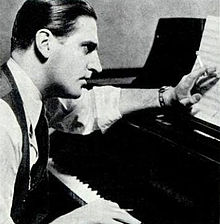 On shows ranging from Maxwell’s Good News program in the late 1930s to the Burns and Allen in the late 40s, and the Big Show in the 1950, Willson portrayed an on-air character who was a little stupid and a bit of a bore. This merely shows what a great actor Willson was. Willson remains one of the underappreciated musical masters of the era. As an orchestra leader and composer, his arrangement were often brilliant and thoughtful. In late 1938, he sought opinions from a wide variety of people asking them if all the music in the world were to be destroyed, what one composition might they save and then had his orchestra play the piece. Willson’s arrangement of music for special occassions and his takes on popular songs were often breathtaking. On the Big Show, he introduced, “May the Good Lord Bless and Keep You” as the closing anthem to The Big Show, sung by all of the stars line by line in what would be a classy and often duplicated closure. The song itself became a standard that would be recorded by a wide variety of actors from Tennessee Ernie Ford to Kate Smith and Johnny Mathis. Willson continued to be a standout as a composer and band leader while at the same time possessing solid comic timing as an actor.
On shows ranging from Maxwell’s Good News program in the late 1930s to the Burns and Allen in the late 40s, and the Big Show in the 1950, Willson portrayed an on-air character who was a little stupid and a bit of a bore. This merely shows what a great actor Willson was. Willson remains one of the underappreciated musical masters of the era. As an orchestra leader and composer, his arrangement were often brilliant and thoughtful. In late 1938, he sought opinions from a wide variety of people asking them if all the music in the world were to be destroyed, what one composition might they save and then had his orchestra play the piece. Willson’s arrangement of music for special occassions and his takes on popular songs were often breathtaking. On the Big Show, he introduced, “May the Good Lord Bless and Keep You” as the closing anthem to The Big Show, sung by all of the stars line by line in what would be a classy and often duplicated closure. The song itself became a standard that would be recorded by a wide variety of actors from Tennessee Ernie Ford to Kate Smith and Johnny Mathis. Willson continued to be a standout as a composer and band leader while at the same time possessing solid comic timing as an actor.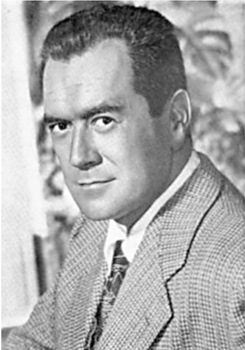 42) Frank Lovejoy-Frank Lovejoy enjoyed one great hit starring role in his career as reporter with a heart Randy Stone in Nightbeat. The program a fan favorite for its mixture of suspense, mystery, and true human drama. However, Lovejoy’s contributions go far beyond that. He began as an actor on programs such as Jungle Jim and The Columbia Workshop and was the first announcer on This is Your FBI. Lovejoy continued to provide solid dramatic support for the latter days of radio’s golden age, frequently lending his talents to Suspense from 1957-59. Throughout his career, Lovejoy did well through his ability to create believable characters whether it was a heavy on Box 13, a cop after typical mugs in an episode of The Damon Runyan Theater, or one of Luigi Bosco’s typical comic foils in Life with Luigi. While Lovejoy never had a huge success with his television programs, he remains a beloved figure in the annals of radio.
42) Frank Lovejoy-Frank Lovejoy enjoyed one great hit starring role in his career as reporter with a heart Randy Stone in Nightbeat. The program a fan favorite for its mixture of suspense, mystery, and true human drama. However, Lovejoy’s contributions go far beyond that. He began as an actor on programs such as Jungle Jim and The Columbia Workshop and was the first announcer on This is Your FBI. Lovejoy continued to provide solid dramatic support for the latter days of radio’s golden age, frequently lending his talents to Suspense from 1957-59. Throughout his career, Lovejoy did well through his ability to create believable characters whether it was a heavy on Box 13, a cop after typical mugs in an episode of The Damon Runyan Theater, or one of Luigi Bosco’s typical comic foils in Life with Luigi. While Lovejoy never had a huge success with his television programs, he remains a beloved figure in the annals of radio.